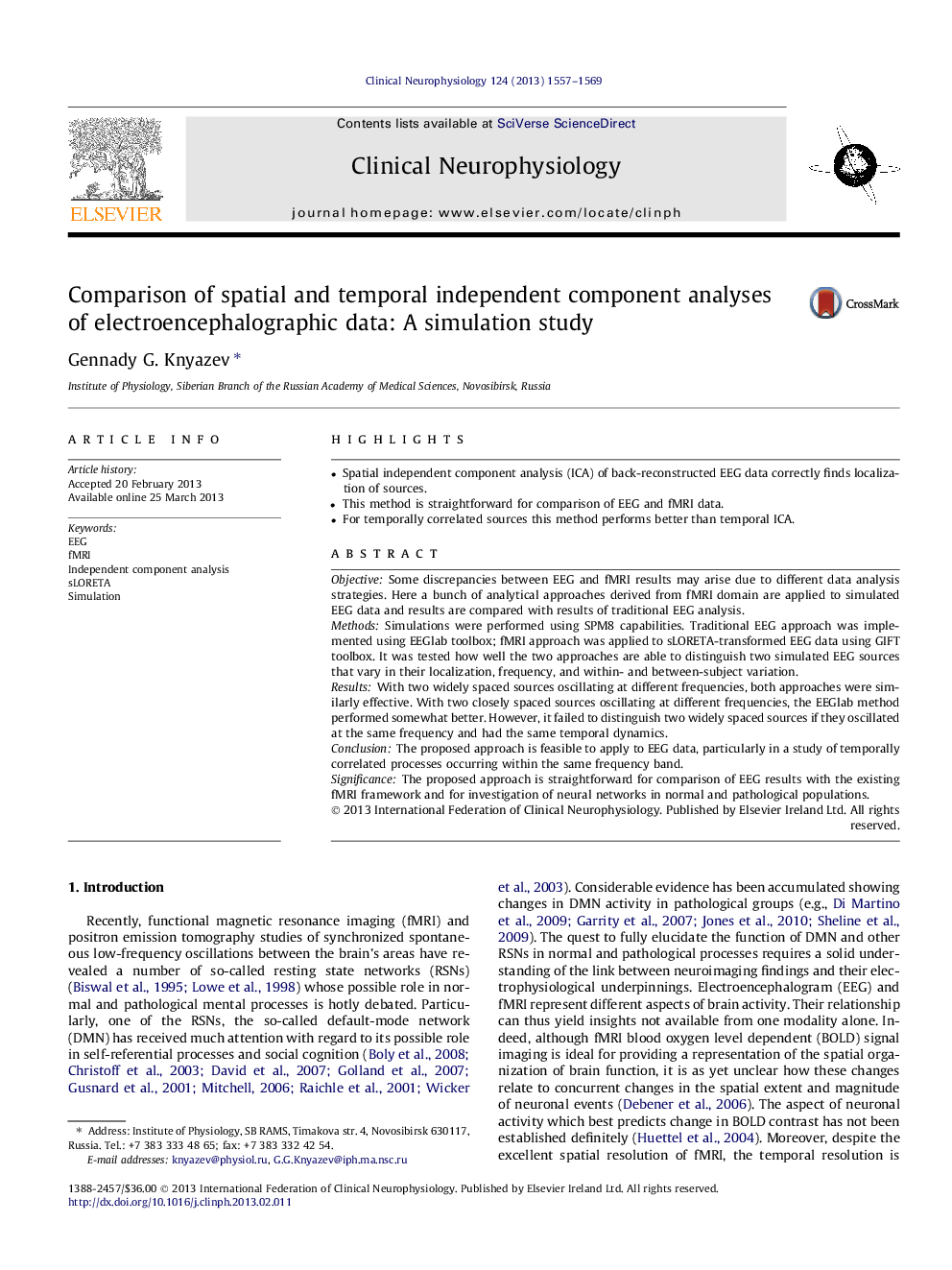| Article ID | Journal | Published Year | Pages | File Type |
|---|---|---|---|---|
| 3045181 | Clinical Neurophysiology | 2013 | 13 Pages |
•Spatial independent component analysis (ICA) of back-reconstructed EEG data correctly finds localization of sources.•This method is straightforward for comparison of EEG and fMRI data.•For temporally correlated sources this method performs better than temporal ICA.
ObjectiveSome discrepancies between EEG and fMRI results may arise due to different data analysis strategies. Here a bunch of analytical approaches derived from fMRI domain are applied to simulated EEG data and results are compared with results of traditional EEG analysis.MethodsSimulations were performed using SPM8 capabilities. Traditional EEG approach was implemented using EEGlab toolbox; fMRI approach was applied to sLORETA-transformed EEG data using GIFT toolbox. It was tested how well the two approaches are able to distinguish two simulated EEG sources that vary in their localization, frequency, and within- and between-subject variation.ResultsWith two widely spaced sources oscillating at different frequencies, both approaches were similarly effective. With two closely spaced sources oscillating at different frequencies, the EEGlab method performed somewhat better. However, it failed to distinguish two widely spaced sources if they oscillated at the same frequency and had the same temporal dynamics.ConclusionThe proposed approach is feasible to apply to EEG data, particularly in a study of temporally correlated processes occurring within the same frequency band.SignificanceThe proposed approach is straightforward for comparison of EEG results with the existing fMRI framework and for investigation of neural networks in normal and pathological populations.
